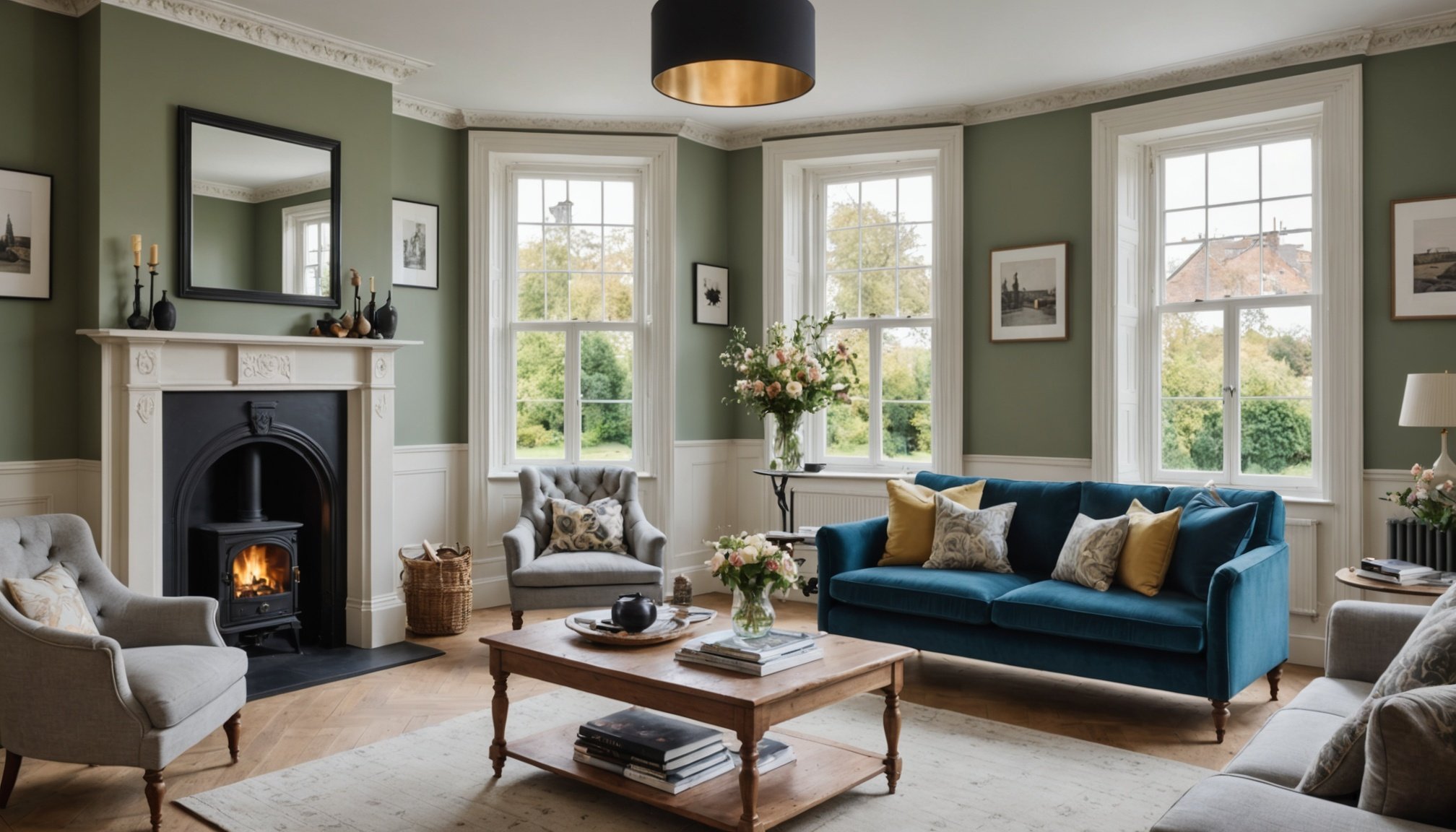Renovating an Edwardian home offers a unique opportunity to merge timeless elegance with modern conveniences. Balancing ornate architectural features with contemporary designs can enhance both comfort and aesthetic appeal. Discover practical tips and innovative ideas to breathe new life into your space while retaining its original charm. Explore how thoughtful design choices can create a harmonious atmosphere that honors the past while embracing the future. Transform your home into a stylish sanctuary that reflects your personal taste and lifestyle.
Understanding Edwardian Architecture
Edwardian architecture, a style that flourished between 1901 and 1914, is noted for its unique blend of design elements and historical charm. This architectural style emerged during the reign of King Edward VII, marking a shift from the elaborate Victorian designs to more simplistic and functional forms. What defines Edwardian homes is their emphasis on light and space, a departure from the darker, more cluttered Victorian interiors.
Also to read : Can you convert the attic of a UK semi-detached house into a home office legally and safely?
Key design elements of Edwardian architecture include large windows, bay windows, and French doors, which allow for ample natural light. Homes from this era often feature red brick exteriors, ornate timber work, and decorative plasterwork. The use of stained glass, particularly in door panels and windows, adds a touch of elegance and colour.
Historically, Edwardian architecture holds significant appeal due to its transitional nature. It bridges the gap between the ornate Victorian era and the modernist movements that followed. The style reflects a period of social change and innovation, making it a fascinating study for architecture enthusiasts. Its historical features are not only aesthetically pleasing but also provide insight into the social and cultural shifts of the early 20th century. Understanding these elements can enhance one's appreciation for the enduring appeal of Edwardian homes.
This might interest you : What is the impact of Brexit on buying property materials for a self-build project in the UK?
Modern Comforts in Home Renovation
Incorporating modern comforts into home renovation involves blending functionality with aesthetics to create spaces that are both practical and visually appealing. Contemporary design trends play a crucial role in this transformation, offering innovative solutions that cater to today's lifestyle needs.
One key aspect of modern comforts is the emphasis on open-plan living spaces. These areas promote a sense of connectivity and flow, enhancing the overall functionality of the home. Large windows and sliding glass doors are popular features, allowing natural light to flood the interiors and creating a seamless connection with the outdoors.
In terms of aesthetics, contemporary design often favours clean lines, neutral colour palettes, and minimalist decor. This approach creates a sense of calm and order, making spaces feel larger and more inviting. The integration of smart home technology is another modern comfort that enhances convenience and efficiency, allowing homeowners to control lighting, temperature, and security systems with ease.
When renovating, it's essential to consider how these elements can be harmoniously combined. The goal is to create a home that not only meets the practical demands of daily life but also reflects personal style and enhances the overall living experience. This thoughtful integration results in a space that is both comfortable and timeless.
Blending Old and New: Design Strategies
Merging the charm of Edwardian architecture with modern comforts requires thoughtful design strategies. This approach ensures that both blending styles and functionality are achieved without compromising the integrity of either.
Incorporating Edwardian Features
To maintain the historical essence, focus on key Edwardian interior design elements such as ornate timber work and stained glass. These features can be preserved or replicated to add character to contemporary spaces. Consider using design strategies that highlight these elements, like accent lighting or strategically placed mirrors to enhance their presence.
Selecting Modern Materials
Choosing the right materials is crucial when blending styles. Opt for modern materials that complement Edwardian features, such as sleek metals or glass that echo the elegance of stained glass. Neutral tones and natural textures can bridge the gap between old and new, creating a balanced aesthetic.
Creating Cohesive Spaces
Achieving seamless transitions between styles involves design layout tips that harmonize architectural elements. Open-plan layouts can be enhanced with period-appropriate details, like decorative mouldings or vintage-inspired fixtures. Techniques such as using consistent colour palettes and textures throughout can unify the space, ensuring a cohesive look that honours both the past and present.
Case Studies and Real-Life Examples
Exploring renovation case studies provides valuable insights into successful home transformations. In the UK, numerous projects have seamlessly blended Edwardian architecture with modern comforts, showcasing innovative approaches to design.
One notable example is a Victorian terrace in London, which underwent a remarkable transformation. The project focused on preserving historical features while incorporating contemporary elements. By retaining original stained glass and timber work, the renovation maintained its Edwardian charm. Simultaneously, open-plan living spaces and modern materials were introduced, enhancing functionality and aesthetics.
Another compelling case is a suburban Edwardian home in Manchester. The renovation aimed to maximise natural light and space. French doors and large windows were installed, creating a seamless indoor-outdoor connection. The use of neutral tones and minimalist decor further modernised the space, resulting in a harmonious blend of old and new.
Lessons learned from these real-life examples emphasise the importance of respecting historical integrity while embracing modernity. Key takeaways include the strategic use of lighting to highlight architectural features and the careful selection of materials that complement existing elements. These projects demonstrate that with thoughtful planning, it is possible to create homes that are both timeless and contemporary.
Budgeting and Planning for Your Renovation
When embarking on a renovation, especially one that blends Edwardian charm with modern comforts, careful budgeting and planning are crucial. Estimating costs accurately is the first step. Consider expenses for both preserving historical features and incorporating contemporary elements. This dual focus ensures a seamless blend of styles without overspending.
Effective planning involves setting clear priorities. Identify which elements are essential to maintain the character of the home and which modern comforts you wish to add. This clarity helps in allocating resources efficiently. A well-structured project management plan can prevent delays and keep costs in check.
Cost considerations should include materials, labour, and unforeseen expenses. Researching and comparing prices for materials like stained glass or modern fixtures can lead to significant savings. Additionally, engaging with professionals experienced in blending styles can provide insights into potential cost-saving measures.
For those seeking financial assistance, explore various resources for budgeting and financing options. Home renovation loans, grants for historic preservation, or even personal savings plans can be viable options. Planning your renovation with these considerations in mind will ensure a successful transformation that respects both the past and the present.













